Last updated on April 26, 2024
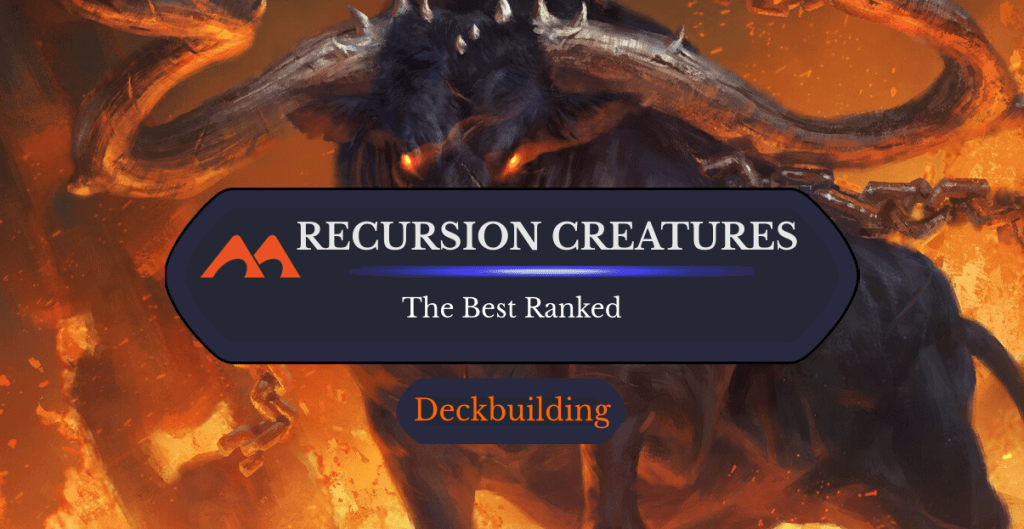
Ox of Agonas | Illustration by Lie Setiawan
It’s always sad to see your creatures die, whether it happens all at once because of Damnation or the classic Murder does the deed. Wouldn’t it be great if your creatures were resistant to kill spells? Well, they can be!
Recursive creatures have a long history in Magic, providing midrange players with the grindy cards they need to win the late-game long after their opponents have emptied their hands and are limping along, just waiting to be put out of their misery. But recursion creatures have many uses beyond resisting removal.
Let’s figure out the best recursive creatures and how we can use them!
What Are Recursion Creatures in MTG?
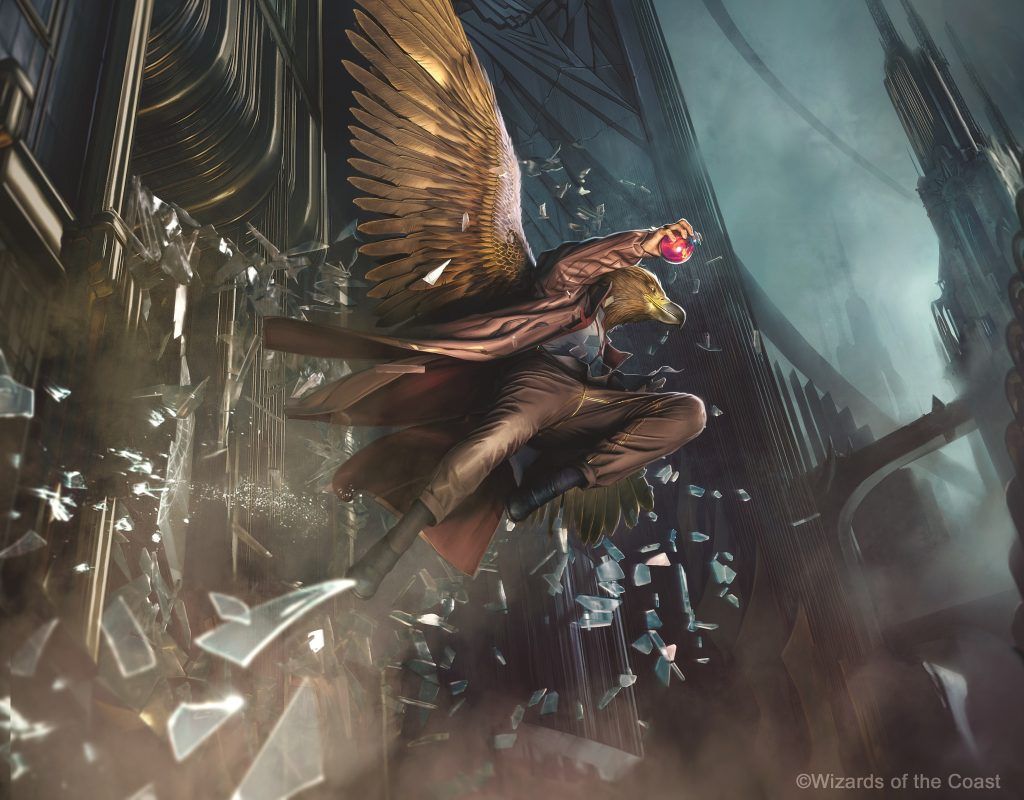
Skyway Robber | Illustration by Denys Tsiperko
Recursion creatures in MTG can return themselves from the graveyard to the battlefield or your hand. They typically switch zones with an activated or triggered abilities that require paying mana, though some let you cast them from the graveyard. Black creatures boast most of these effects, though every color has a recursive creature or two.
Critically, I’m only looking at creatures that can recur themselves multiple times. This condition excludes one-shot recursion effects like unearth, disturb, and persist. I’m also not considering creatures that recur other creatures like Gravedigger or Extraction Specialist.
Finally, this list looks to help Commander players. Constructed all-stars like Arclight Phoenix and Vengevine deserve all the accolades and honorable mentions I have space for but are just outside my scope. I’m looking for creatures that recur themselves for the least mana and set-up possible; cards that require an immense mana investment or very specific condition to recur rank lower than efficient options. Efficiency always matters but that goes double for creatures like these that you want to cast many times throughout a game.
Is My Commander a Recursion Creature?
Pretty much. Recasting your commander from the command zone falls into the same idea as the cards on this list. A defining feature of Commander is the player’s ability to always have access to a particular card through most interaction. Since your commander can’t die except for cards like Imprisoned in the Moon that transform it, I’d consider it a recursive creature.
#47. Lingering Phantom
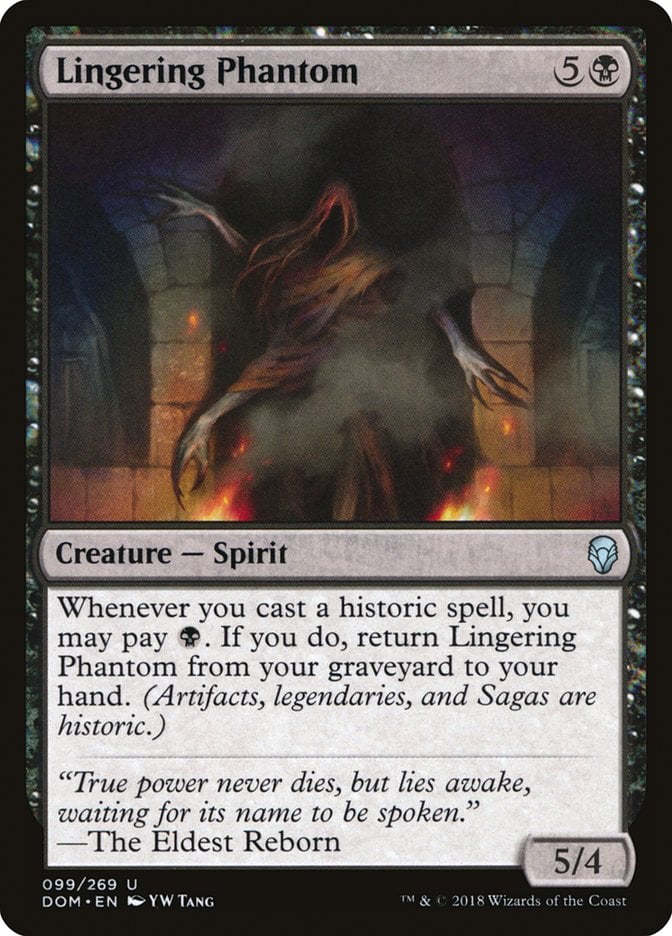
Lingering Phantom has a sizable body with a mana value to match. The constant influx of new historic permanents makes it easy to trigger; I feel like this spirit has a role in decks interested in discarding cards over and over, but I don’t know how much I want to hard-cast it.
#46. Rona, Sheoldred's Faithful
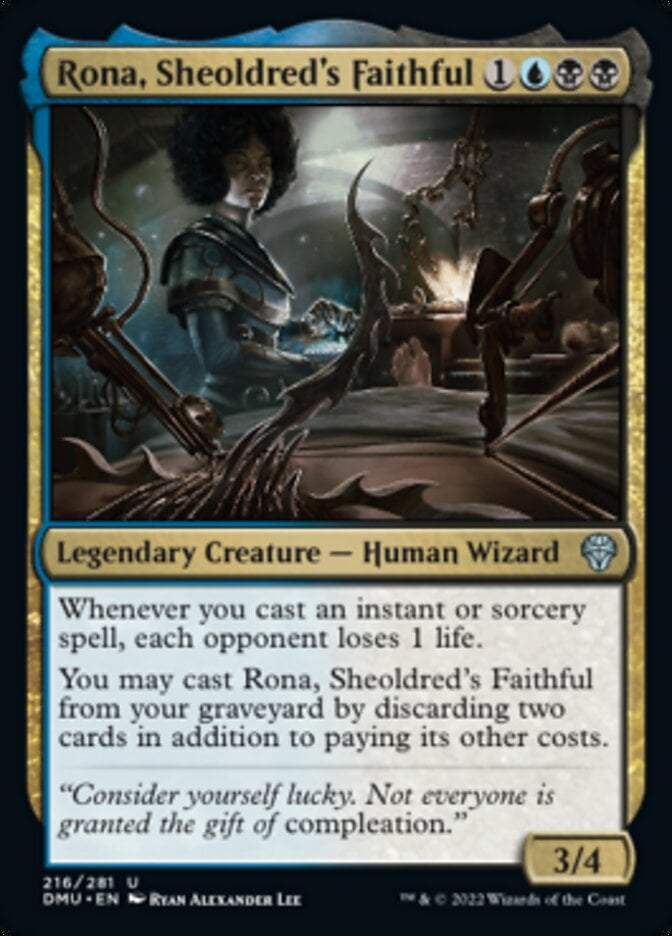
Discarding two cards is among the steeper costs you could pay to recur a creature. However, I don’t want to rule Rona, Sheoldred's Faithful out. This Dimir human wizard works well in a storm-esque deck, which I assume could draw enough cards to offset the ones you need to discard.
#45. Me, the Immortal
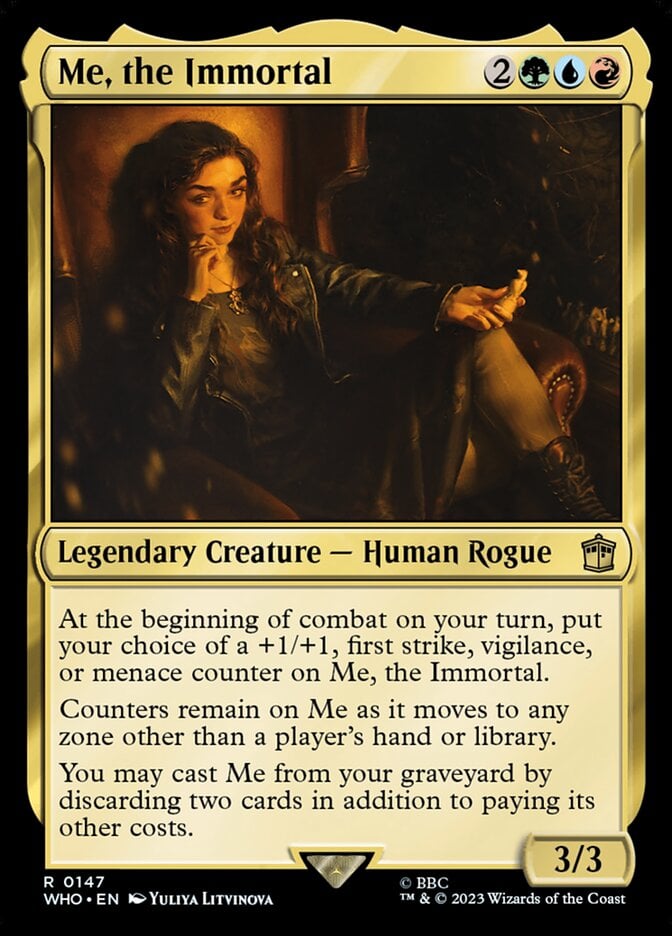
Me, the Immortal has a fantastic design. It’s not commander material so much as a member of the 99. I’d like this rogue more if it could get more counters on its own, though it stands as a reasonable threat for 4 mana. Having the choice of a +1/+1 counter, vigilance, first strike, or menace provides a lot of flexibility, especially with cards that could add additional abilities counters.
#44. Haakon, Stromgald Scourge
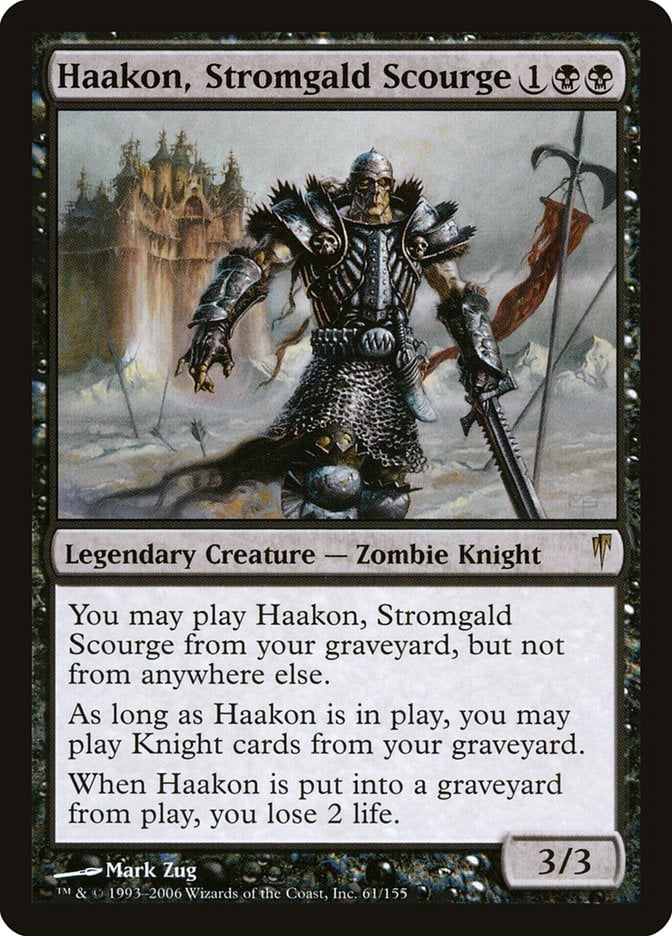
You’ll never see Haakon, Stromgald Scourge in the command zone, but this black zombie knight offers great value to decks that reliably bin it. It even promises card advantage to the enterprising knight-typal player.
#43. Bladewing’s Thrall
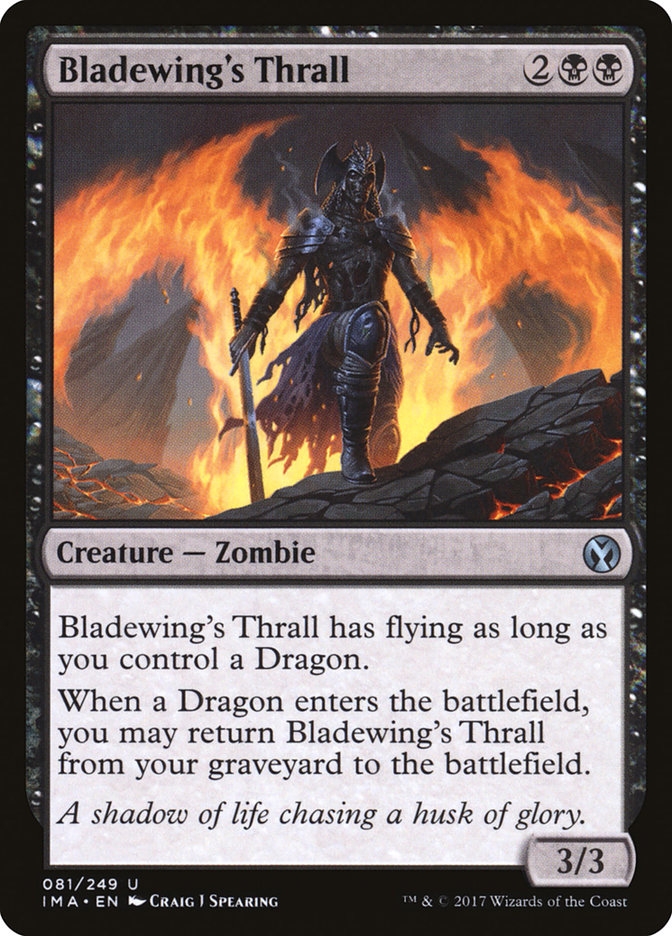
While I expected to see plenty of recursive zombies and skeletons, the number of dragons that recur themselves surprised me. Bladewing's Thrall isn’t a dragon proper but plays well in a strategy interested in both dragons and sacrifice; Korvold, Fae-Cursed King leaps to mind as a dragon commander that could use this.
#42. Masked Admirers
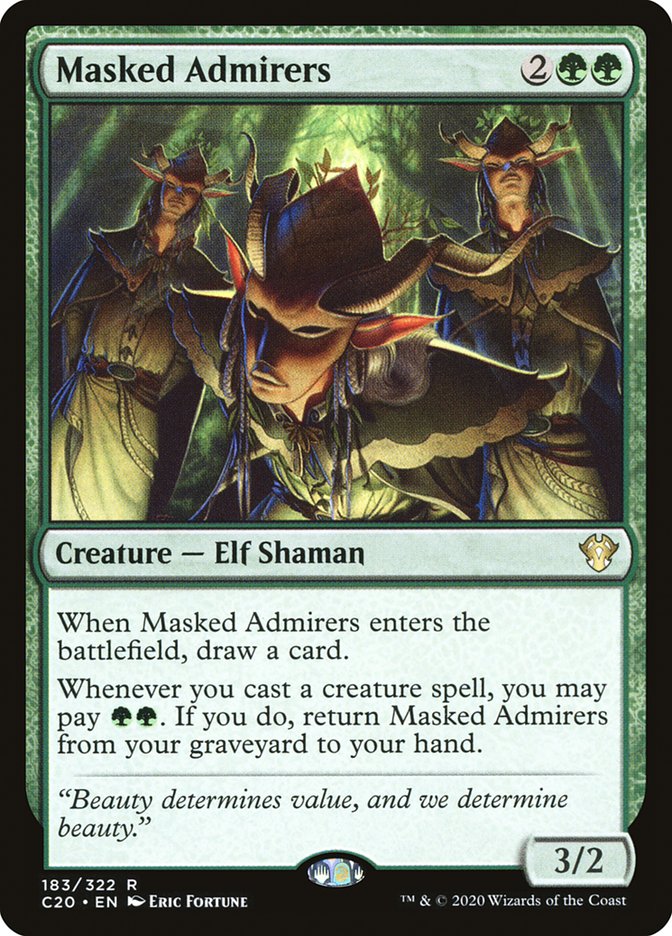
I’ve been enthralled with Masked Admirers whenever I came across it in Cube, but this elf shaman feels far too slow for the current Commander landscape. Green has plenty of better options for creature-based card draw like Beast Whisperer and The Great Henge. That said, this is still a reasonable green creature in drawn-out games.
#41. Chainweb Aracnir

Recursive creatures feel like 2-for-1s since you get so much value from playing one creature over and over but Chainweb Aracnir makes that official. This spider should never be your only interactive spell, but it can flesh out an interaction suite without much sacrifice.
#40. Ovalchase Daredevil
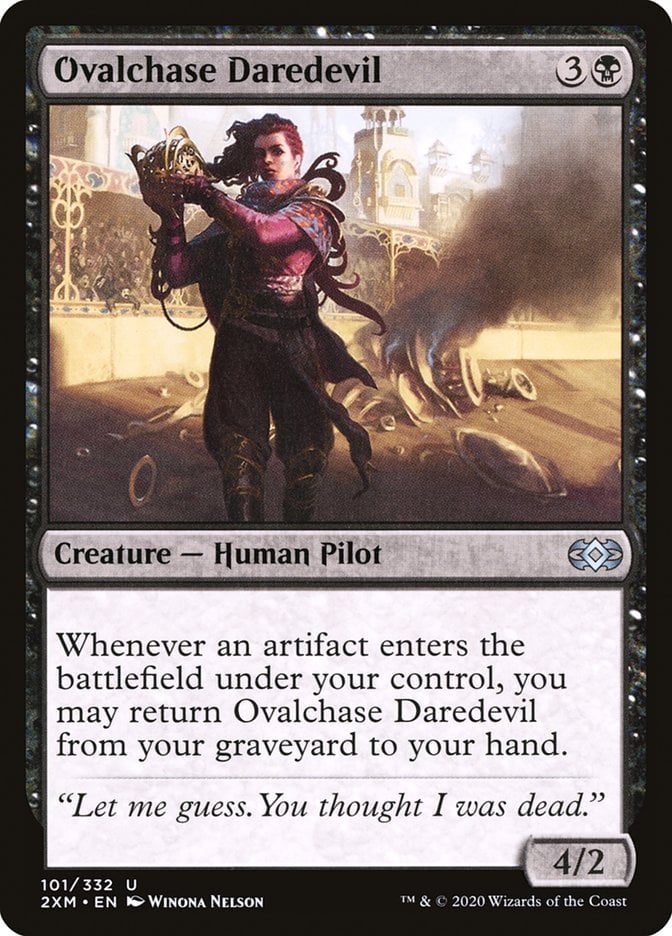
Ovalchase Daredevil has been running laps in Modern with the likes of The Underworld Cookbook. There’s no reason you can’t bring that value train to EDH alongside cards like Currency Converter and anything else that rewards you for discarding cards while creating artifacts.
#39. Charred Graverobber
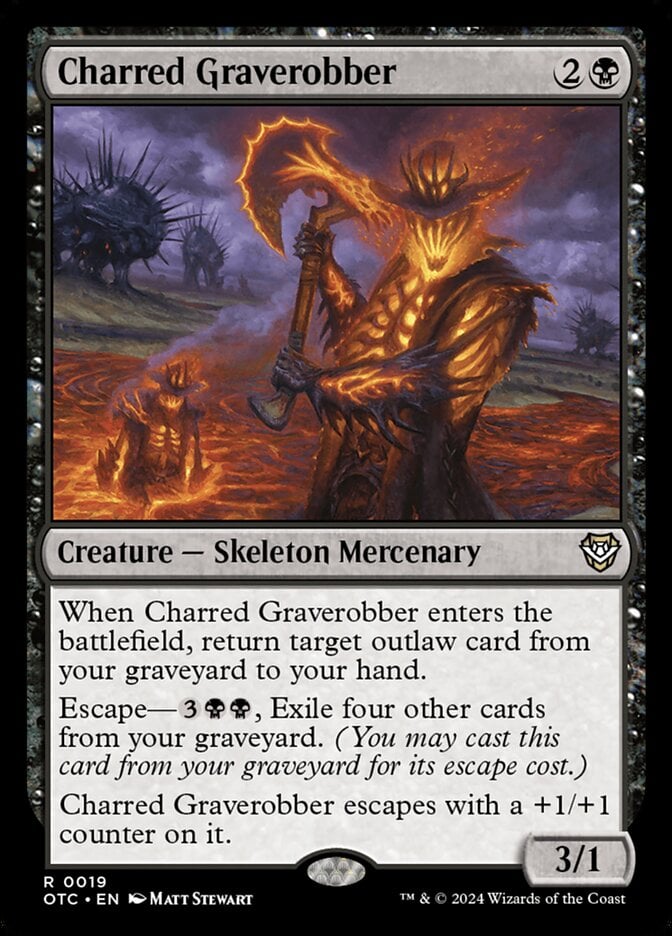
I doubt Charred Graverobber sees extensive play in true outlaw decks (mostly because I find the mechanic weak), but it’ll be an excellent support piece in a variety of typal decks helmed by commanders like Admiral Beckett Brass, Etrata, Deadly Fugitive, and Anowon, the Ruin Thief.
#38. Death Tyrant
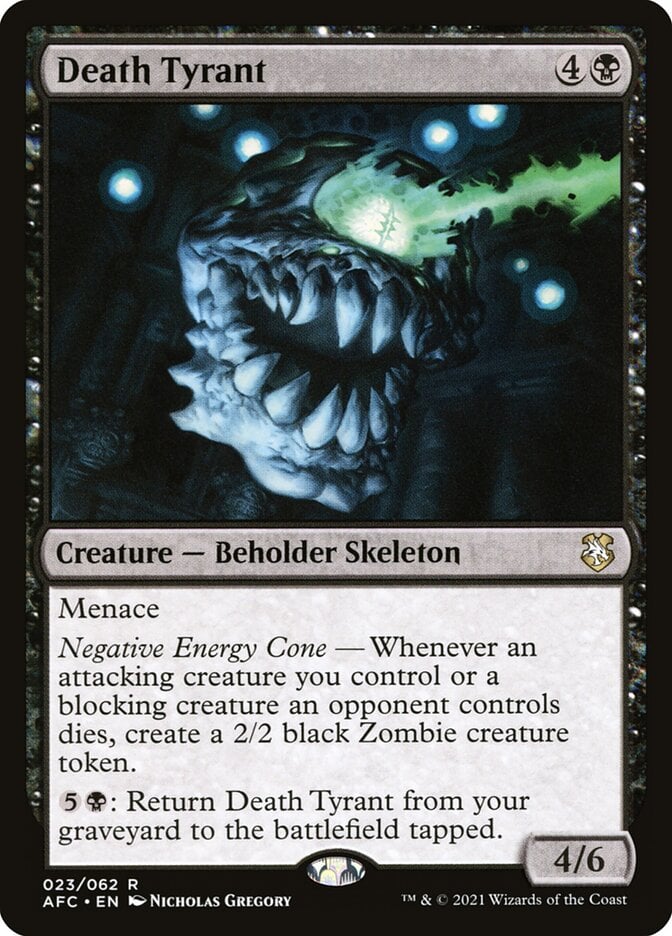
Death Tyrant requires quite the mana investment to return to play, but it doesn’t have any stipulations; you can even do it on your opponent’s turn! This probably results in some blowouts when you reanimate it in combat after your opponents forget this beholder was chilling in your graveyard.
#37. Skyfire Phoenix
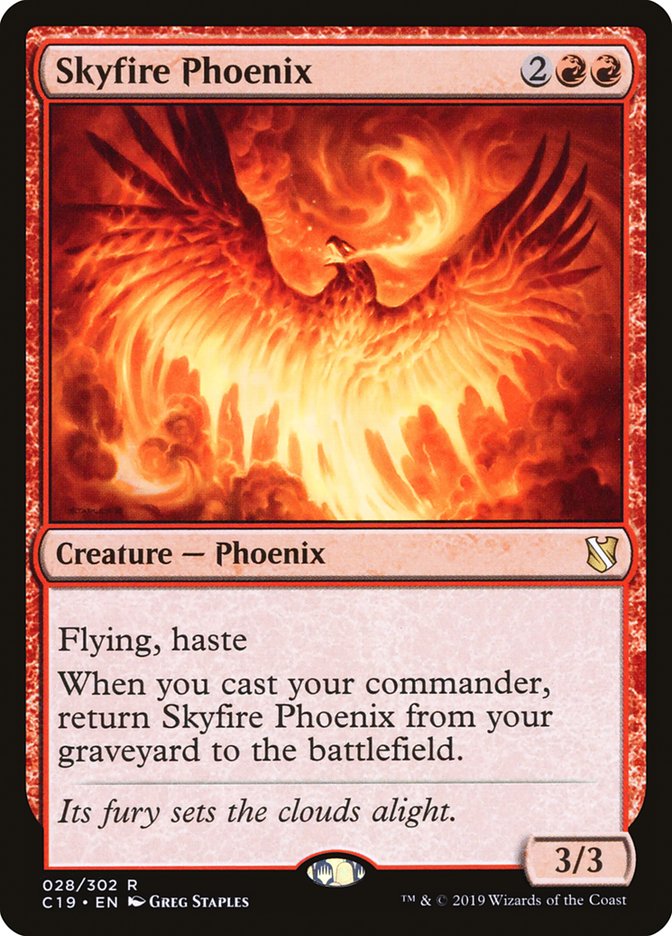
I really want to like Skyfire Phoenix. It feels like it has great utility with commanders like Vaevictis Asmadi, the Dire, but how often are you casting your commander in a game? You could argue that this red creature provides a boon if you’re behind and recasting your commander often, but it’s such a weak payoff that you’d be better off running protection in that slot. Creatures that return themselves to the battlefield for free are inherently powerful, so I don’t want to write this off, but not seeing a good home has me suspicious.
#36. Squee, the Immortal
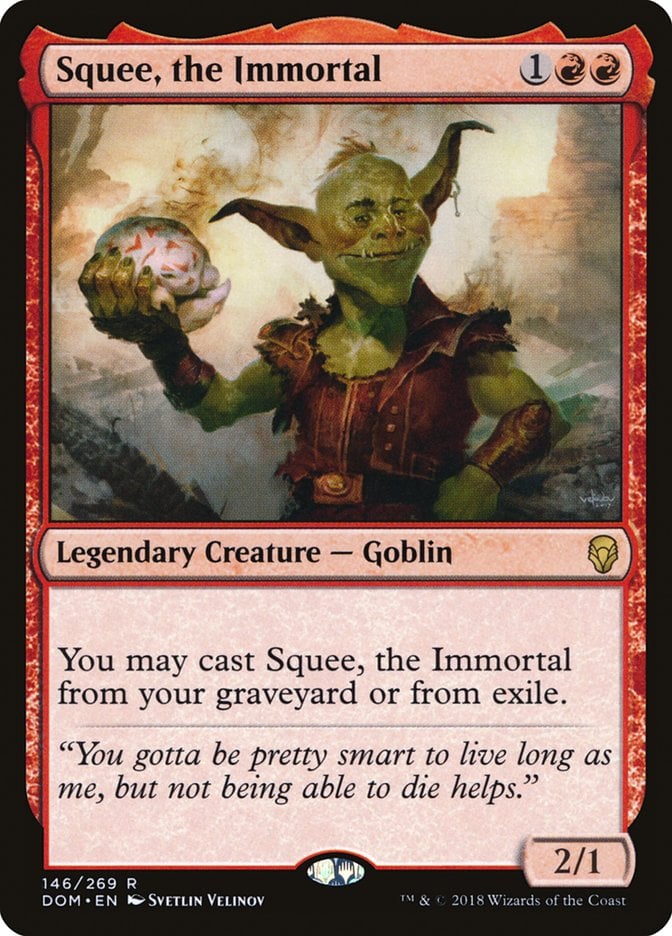
Few people play Squee, the Immortal for anything but Food Chain combo, but that merits its own notation for this undying goblin. Misthollow Griffin and Eternal Scourge also deserve callouts for their utility in this niche.
#35. Helbrute

Exiling creatures from your graveyard can be a real cost for Rakdos decks, but Helbrute has impressive stats thanks to haste. Plenty of decks can use a chonky artifact creature that won’t stay dead.
#34. Squee, Goblin Nabob
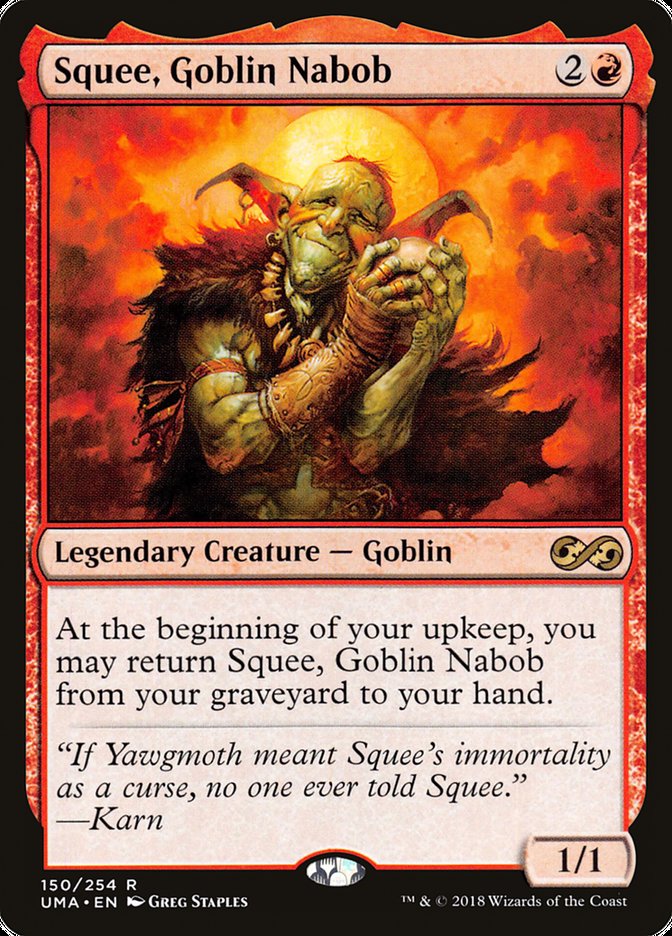
My preferred utilization of Squee, Goblin Nabob involves never casting it. You can instead use its recursive ability to break the parity of cards like Liliana of the Veil or Necrogen Mists or to fuel cards like Chainer, Nightmare Adept that require discard fodder.
#33. Risen Executioner

An endless recursive zombie lord has appeal, but Risen Executioner might have the steepest recursion cost on the list. The key to leveraging this zombie warrior is to minimize your graveyard strategy. Avoid Sidisi, Brood Tyrant and Gisa and Geralf—two zombie commanders that use self-mill to fuel their strategies—in favor of those like Wilhelt, the Rotcleaver that use the graveyard lightly.
#32. Demilich
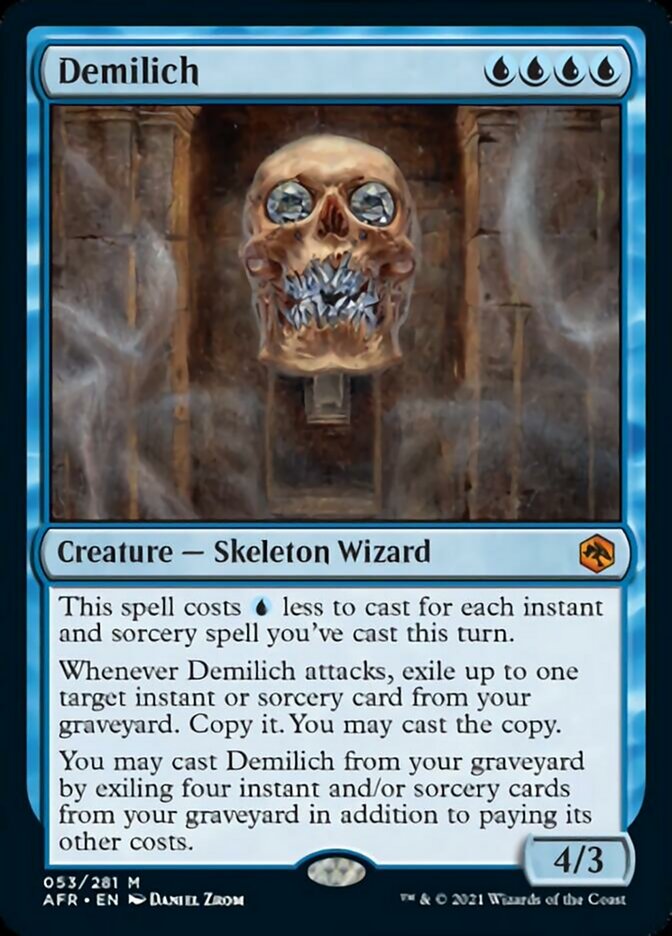
I’ve always wanted more from Demilich than it ever delivers, but I might not have found the right deck yet. is a daunting mana value that basically restricts this blue creature to mono-blue or 2-color decks, but recasting your best instants and sorceries extends the lead cards like Time Warp and Breach the Multiverse naturally provide.
#31. Sproutback Trudge

Green doesn’t interact with lifegain much but Sproutback Trudge looks like a compelling reason to consider cards like Weather the Storm and Essence Warden. Paying 6 mana for this fungus beast would be a fine rate and only requires gaining 3 life; anything less is a steal for such a large creature.
#30. Cauldron Familiar

One of the most irritating cards I’ve ever played against in Limited and Standard, Cauldron Familiar has a home in various Food decks. You’ll typically see this black kitten as a combo piece alongside the likes of Samwise Gamgee or Academy Manufactor (with a way to create Treasure when the cat dies à la Pitiless Plunderer) with a free sacrifice outlet.
#29. Earthquake Dragon
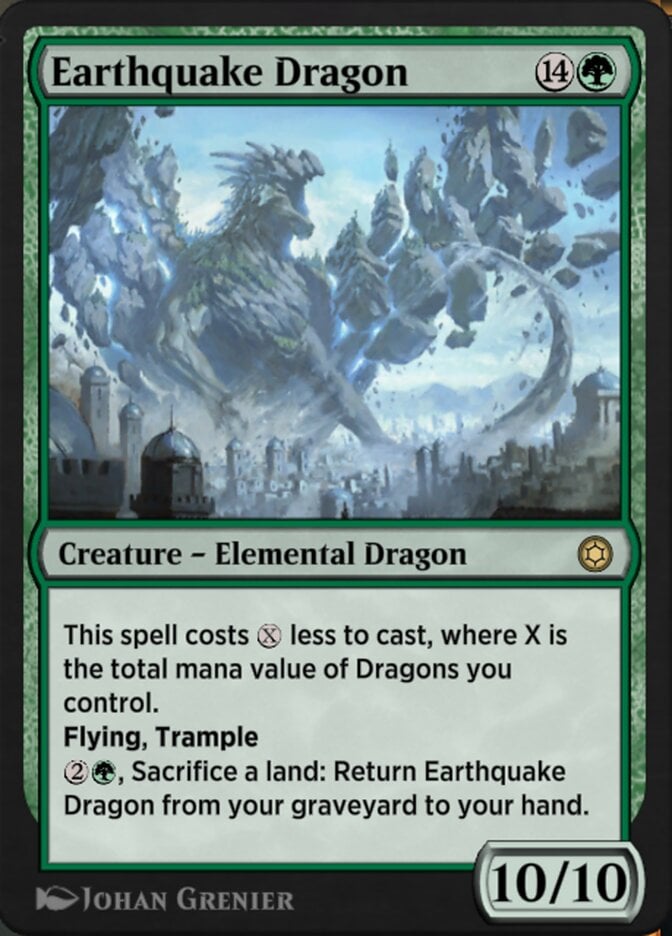
15 mana looks like a lot, but dragon decks excel at pumping out massive creatures. One Dragonlord Atarka makes Earthquake Dragon a reasonable castable card before considering creatures like Dragonlord's Servant and Dragonspeaker Shaman that reduce the casting cost further. Sacrificing a land can be bad, but I’d expect a green deck to have plenty of spare lands by the time you’re recurring this elemental dragon.
#28. Jaya’s Pheonix

Jaya's Pheonix requires a high density of planeswalkers, severely limiting its playability range. But! Copying loyal abilities can be powerful. The recursive element plays well with superfriends decks since they often want to play a bunch of board wipes to protect their planeswalkers. An impactful creature that survives the many Damnation variants is strong, even though it’s super narrow.
#27. Syrix, Carrier of the Flame

Syrix, Carrier of the Flame is the one and only legendary phoenix commander. The Rakdos color identity intrigues me. Phoenixes are almost exclusively mono-red cards, with the only exceptions being Syrix and Otharri, Suns' Glory. I think the goal of adding black was giving players access to a plethora of sacrifice effects to make use of the recurring nature of other phoenixes.
#26. Tenacious Underdog
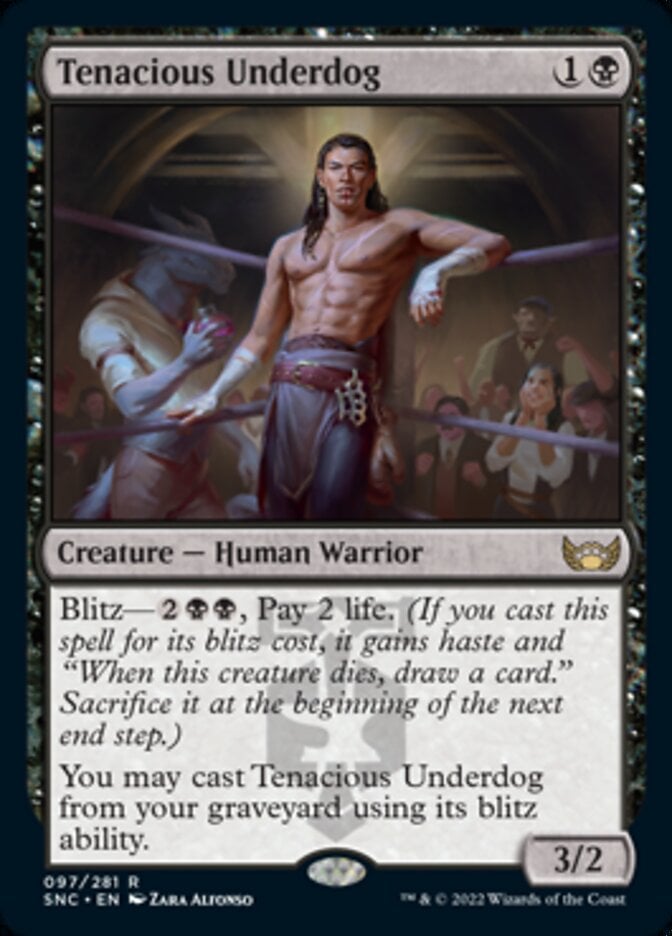
Everybody loves an underdog. Tenacious Underdog won’t stay down and rewards you with card draw as you keep slugging at your opponents until they’re down and out. It’s a bit of a mana investment, but this card works in a few flavors of self-mill and sacrifice.
#25. Ebondeath, Dracolich
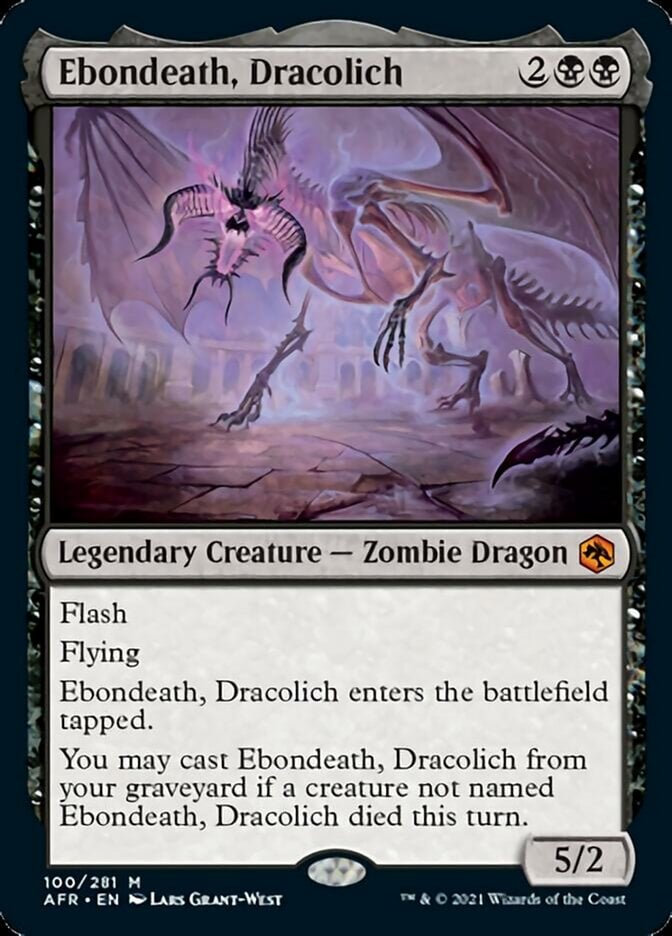
I’d be far more interested in Ebondeath, Dracolich if it weren’t so fragile as a 5/2. A stiff breeze knocks this zombie dragon back into the graveyard. But it’s still a large flying zombie with a negligible prerequisite to recast it.
#24. Woe Strider

Free sacrifice outlets are the bread and butter of aristocrat decks that want to pile up as many Blood Artist and Midnight Reaper triggers as possible. Woe Strider even comes with some sacrifice fodder in the form of a Goat! Most EDH decks won’t care about the extra +1/+1 counters when this horror returns; they’ll just appreciate a recurring sacrifice outlet.
#23. The Scorpion God

All the gods from Hour of Devastation have powerful recursive abilities, but The Scorpion God falls short of the others’ glory. This isn’t a weak card, it’s just incredibly narrow compared to the others and most Magic cards in general. If your deck supports significant -1/-1 counter synergies, this god is a slam-dunk, but most decks won’t use this.
#22. Metalwork Colossus
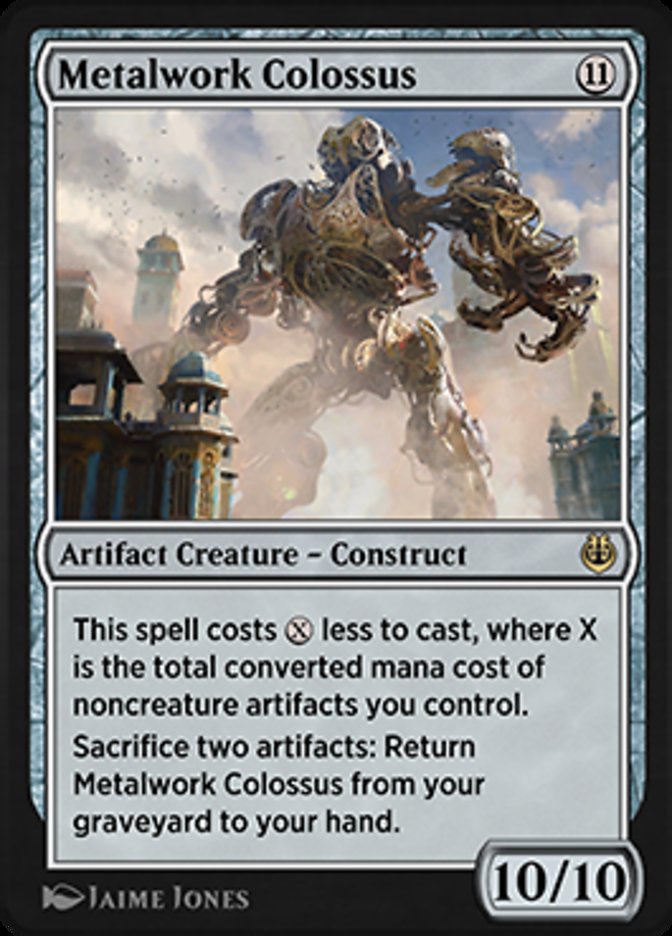
I spent lots of time trying to make Metalwork Colossus perform in Standard and often fell short, but it’s an interesting colorless card for Commander. Plenty of decks can churn out a ton of artifacts with enough Treasure tokens to spare some for the activated ability.
#21. World Breaker

Creatures that kill something when they come into play are always powerful. World Breaker might be costly, but green decks rarely have trouble powering out expensive spells. Exiling the target is a nice touch to deal with sticky threats like The One Ring.
#20. Dogged Detective

Self-mill decks love Dogged Detective since it surveils cards into the graveyard while being a payoff as a recursive creature. Commander decks pack so much card draw you can reliably expect to see this several times a game; you can even encourage it with cards like Faerie Mastermind and Loran of the Third Path.
#19. Scourge of Nel Toth
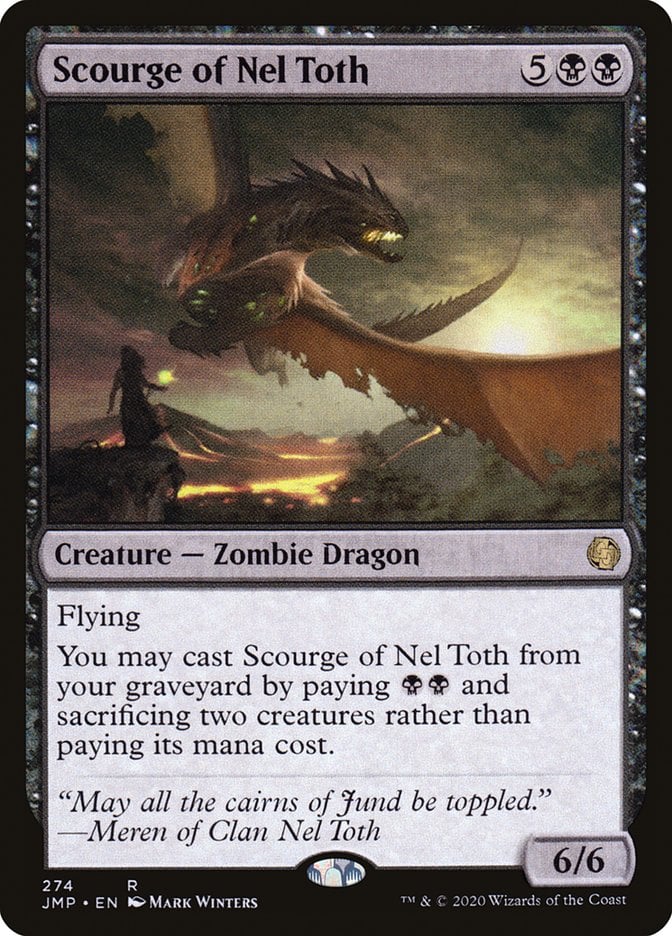
I never want to cast Scourge of Nel Toth from any zone but the graveyard, but it’s a steal for and two creatures. Token-heavy decks or decks with creatures like Shambling Ghast and Primal Druid that reward you for sacrificing them get lots of mileage from a 2-mana 6/6.
#18. Poxwalkers
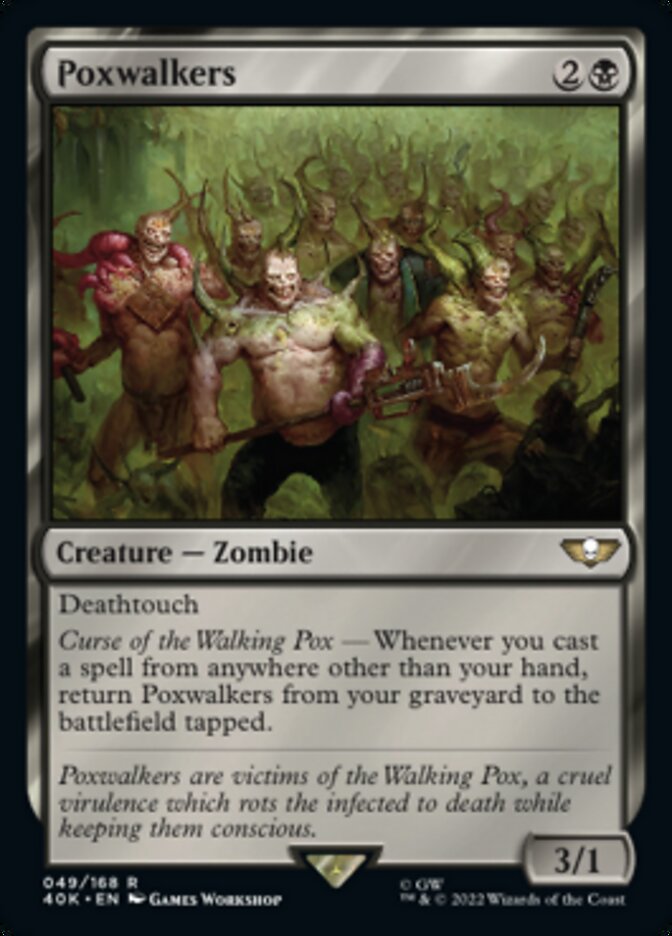
Poxwalkers strikes me as a secret card as it works best with impulse draws. When I think of cards I want to pair this with, Inti, Seneschal of the Sun and Rakdos, the Muscle come to mind rather than mono-black strategies. Decks that can trigger Poxwalkers likely should play it.
#17. Skyway Robber
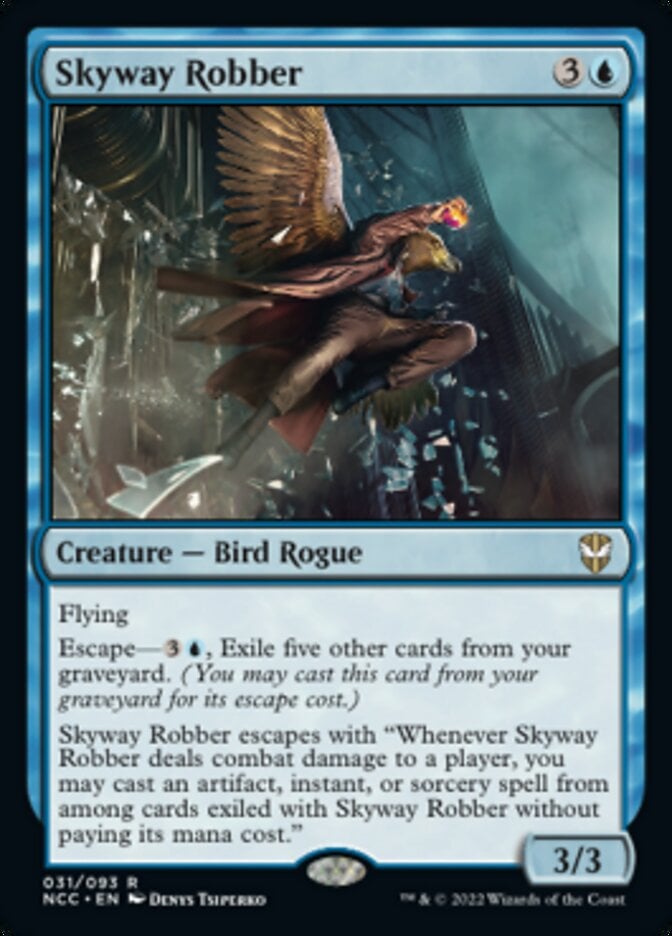
Skyway Robber is an excellent pun, but I appreciate the design as much as the gag. An escape creature that does something with the cards it exiles to escape probes interesting design spaces; that this bird rogue works so well in the flavor elevates this card beyond an amusement to an actual gem.
#16. Mosswood Dreadknight
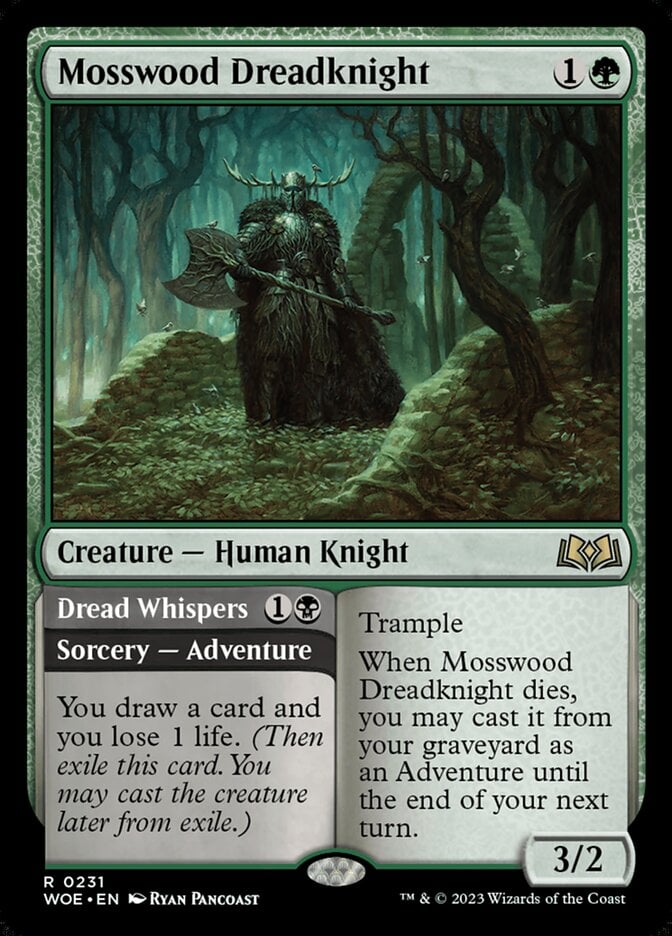
I love Mosswood Dreadknight. The Arthurian reference is on point, and this cheap, grindy knight is everything I want out of midrange decks in the spirit of The Rock. Decks interested in sacrificing and recasting threats or simply taxing their opponent’s patience and removal will love this.
#15. Master of Death
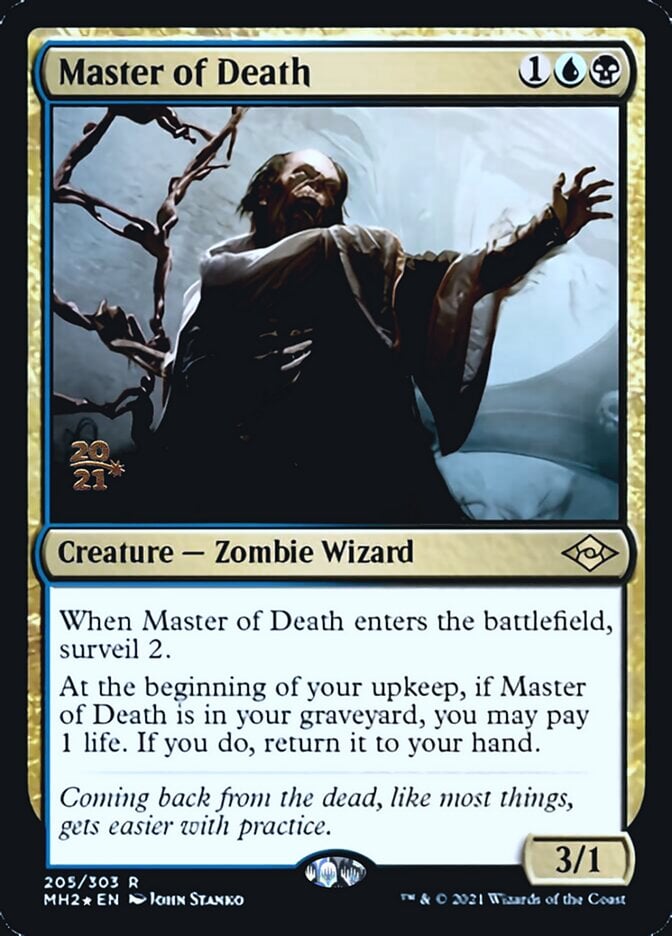
Zombie-typal decks often flirt with sacrifice and self-mill subthemes, giving you plenty of ways to get Master of Death into your graveyard. Even if you don’t care about the creature type, this zombie wizard works well in self-mill decks since it stocks the graveyard and benefits you when milled.
#14. Recursive 2/1s
Magic design is littered with recursive 2/1s, usually 1-drops, that return themselves to play for a nominal fee plus a small prerequisite (typically a creature other than it dying). Some classics include Gutterbones and Bloodsoaked Champion with a new entry in Forsaken Miner. If you can reliably meet whatever the extra requirement is, these are excellent in decks that need cheap sacrifice fodder.
#13. Hogaak, Arisen Necropolis

Hogaak, Arisen Necropolis warped the Modern meta so hard it turned inside out. It’ll never reach those heights in EDH, but that doesn’t mean it’s worthless. A giant creature you can cast for no mana has plenty of utility alongside cards like Greater Good and The Gitrog, Ravenous Ride.
#12. God Eternal Oketra
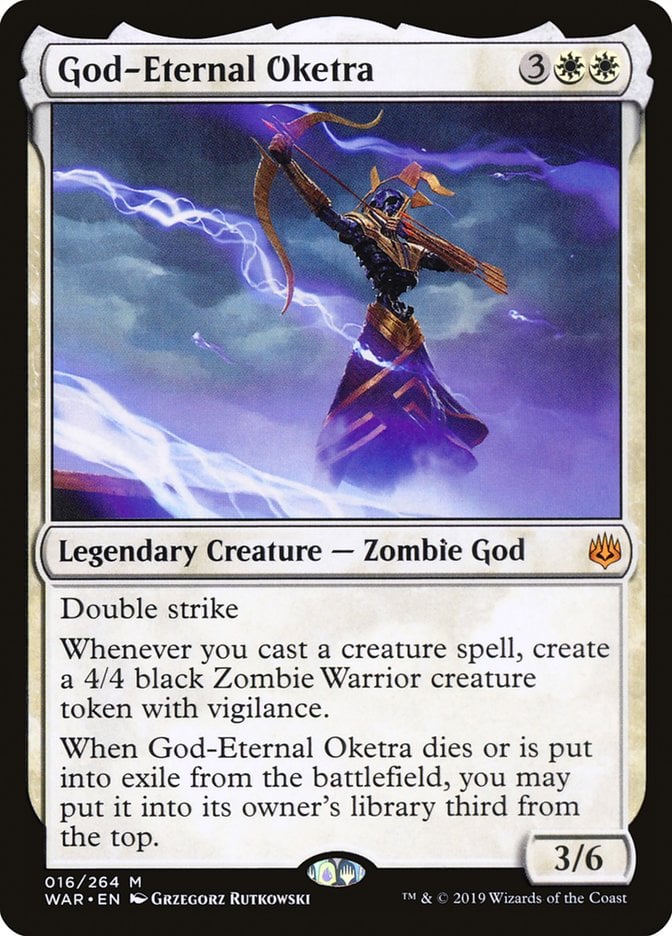
It only takes a turn or two for God-Eternal Oketra to dominate a game. This white creature plays well with creatures like Whitemane Lion and Shepherd of the Flock that let you replay creatures.
#11. Multani, Yavimaya’s Avatar

I can’t call returning lands to your hand nothing, but I fully expect decks interested in playing Multani, Yavimaya's Avatar to either have a surplus of lands or plenty of effects like Exploration and Burgeoning to get them back in play. Bouncing lands can even be a significant upside with landfall cards or MDFCs. That’s plenty of value before considering how large Multani gets.
#10. Gravecrawler

Gravecrawler and Phyrexian Altar go together like Deceiver Exarch and Splinter Twin. Even if you aren’t comboing off with Gravecrawler, you can get tons of mileage sacrificing it to cards like Carrion Feeder and Yawgmoth, Thran Physician over and over.
#9. Slimefoot and Squee

Slimefoot and Squee is a great friend to bring to parties. No matter how shy Archon of Cruelty and Inferno Titan get, it knows how to pull them out of the graveyard and their shell. A powerful reanimation/recursion creature makes an excellent commander.
#8. Old One Eye

Old One Eye doesn’t have flashy abilities or immense combo potential. It’s just got numbers. Insanely high numbers: 11 power and toughness for 6 mana is beyond “above rate.” It’s interstellar. That’s before considering the recursive power or pairing this with Doubling Season effects. This Timmy card Timmys so hard Spike would play it.
#7. Otharri, Suns’ Glory
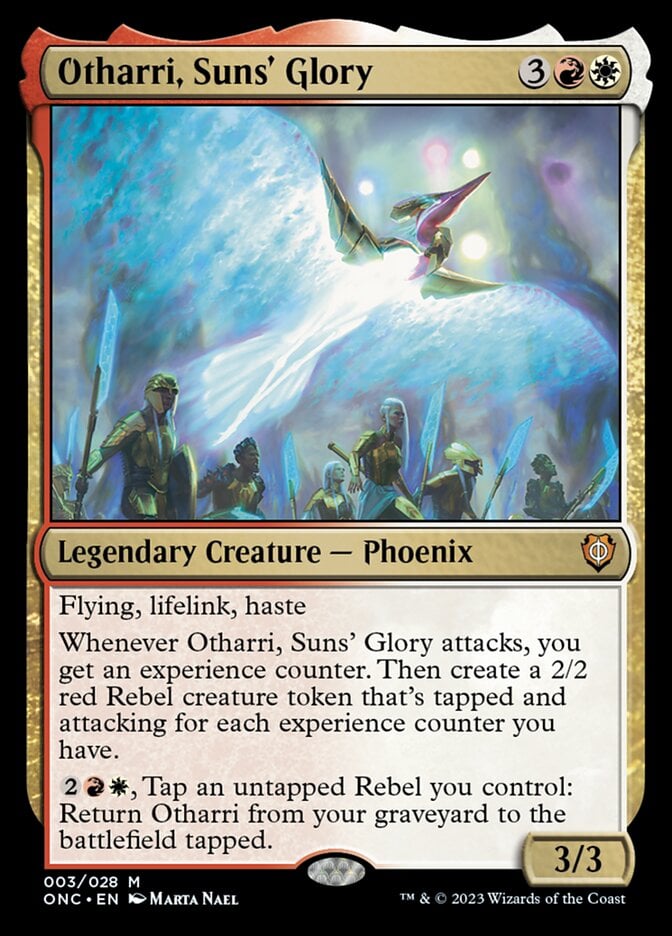
The word “pressure” in The Magic: The Gathering Player’s Dictionary is defined with a picture of Otharri, Suns' Glory. This Boros phoenix pounds away at opposing life totals on its own before you consider support from cards like Mondrak, Glory Dominus, Purphoros, God of the Forge, or Grateful Apparition.
#6. Ox of Agonas
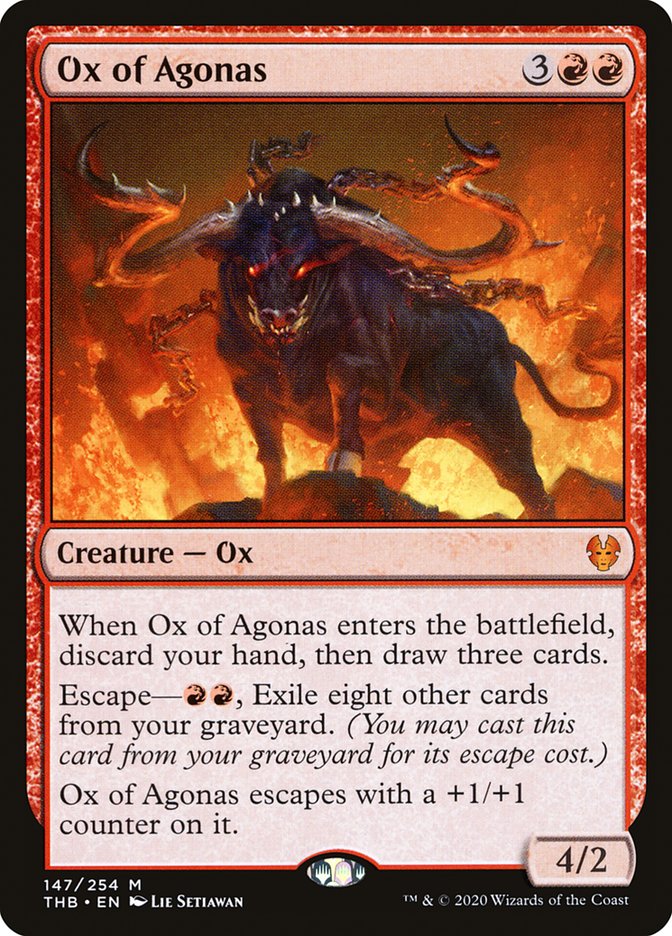
You need to constantly empty your hand or at least not mind discarding to leverage Ox of Agonas but that’s a small ask for a recursive creature that draws a fresh grip each time you cast it. Eight cards to escape looks like a lot, but cheap interaction and fetch lands fill the bin faster than you think.
#5. Kroxa, Titan of Death’s Hunger

Kroxa, Titan of Death's Hunger plays best with cards like Geth's Grimoire and Waste Not that take advantage of the discard trigger. This elder giant can still be a terrifying threat without such synergies if your deck can fill the graveyard quickly and handle a color-intensive mana cost.
#4. The Scarab God
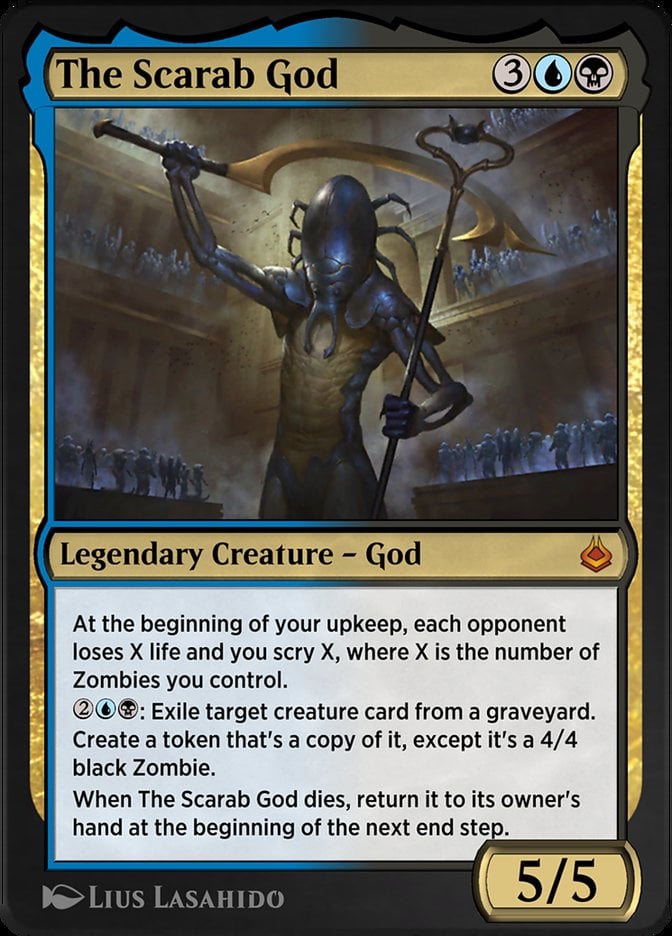
The zombie decks needed to get one last hit in with one of their strongest commanders. The Scarab God doesn’t need to be a zombie commander; as one of the best Dimir commanders, you could also go reanimator or even mill. And this god is one of the best Dimir cards overall, so it's also fantastic in the 99. It’s just a great card as an imposing threat that doesn’t go away without an exile effect.
#3. The Locust God
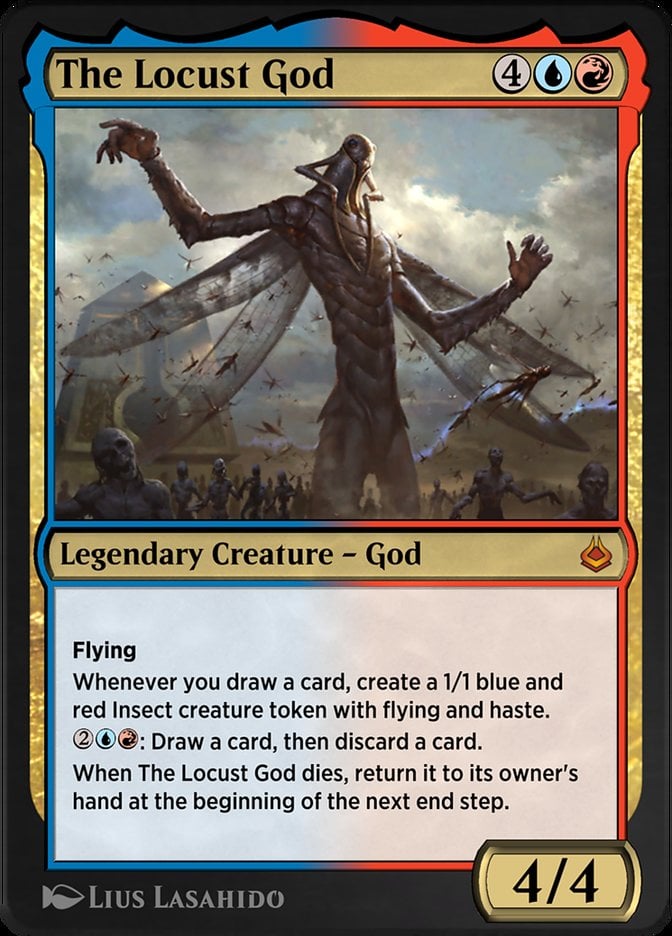
Few Izzet commanders have the blink-and-you’ll-miss-it effect like The Locust God. I’ve taken a sip of my drink and lost before the cup touched the table to a flurry of furious Insects spawned by Wheel of Misfortune and empowered by Balmor, Battlemage Captain.
#2. Bloodghast
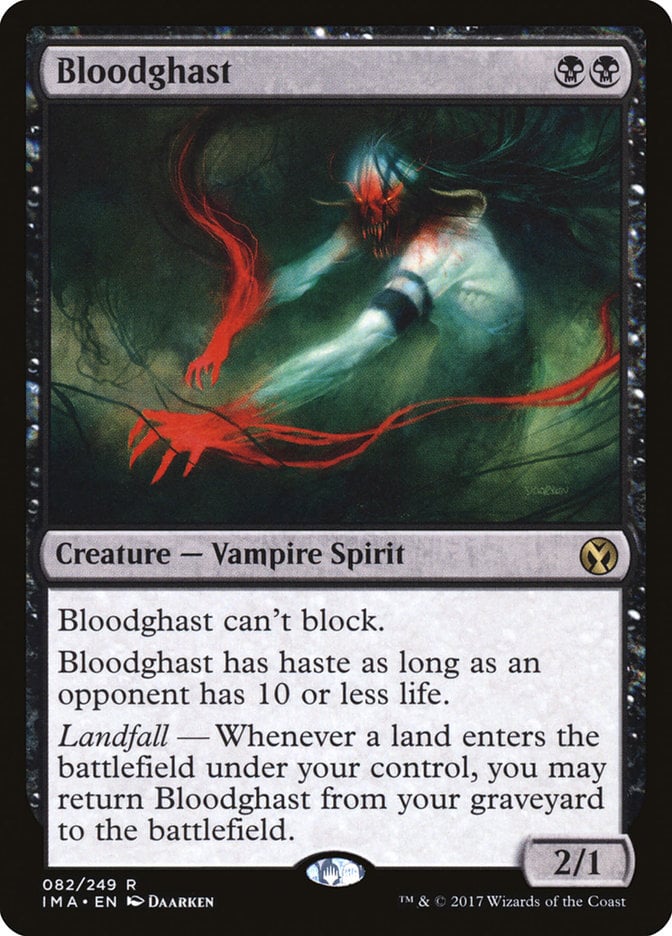
While dredge decks in Constructed formats use Bloodghast as an aggressive creature, Commander players are more likely to use this vampire spirit as one of the best sources of sacrifice fodder in the format. It comes back basically every turn to sacrifice to whatever busted synergies you’re working with.
#1. Uro, Titan of Nature’s Wrath
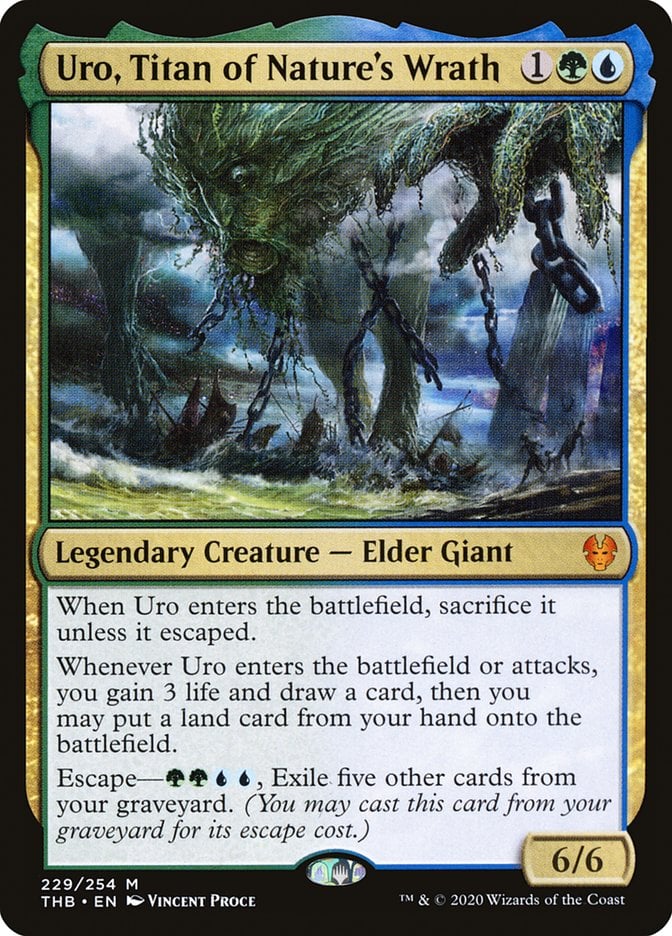
Uro, Titan of Nature's Wrath once loomed over most Constructed formats, but a handful of well-aimed strikes from the ban hammer returned it to the Underworld. One creature providing card advantage, ramp, and lifegain for stabilization makes for a horrifying threat, especially since it won’t stay dead.
Best Recursion Creature Payoffs
Recursion creatures tend to work best with sacrifice or self-mill strategies. The strategy you want depends on the conditions for recurring your creature, where it goes (the hand or battlefield), and the impact the creature has on the game.
Really cheap creatures that return to the battlefield for little to no mana without intensive conditions work best alongside sacrifice commanders and in sacrifice-heavy decks. Think of cards like Bloodghast, Forsaken Miner, and Gravecrawler. Because they’re so efficient and go to the battlefield, you can sacrifice them over and over to your payoffs.
Creatures that are more complicated or resource-intensive work better with self-mill strategies. Ox of Agonas, Old One Eye, and Ebondeath, Dracolich require too many resources to want to regularly sacrifice to Carrion Feeder and other payoffs. They do work well in decks that can fill the bin and exploit their recursive abilities by milling them.
It's also important to consider that not every recursive creature needs a payoff. Just because you put Old One Eye in your deck doesn’t mean it needs a complex system to get it into the bin and profit off the discard. Any green deck benefits from a creature that won’t stay down. Recursive creatures with a major impact on the game like Uro, Titan of Nature's Wrath and Otharri, Suns' Glory rarely need much support to get them into the graveyard because their abilities work for protection rather than synergy.
Won’t Stay Dead for Long
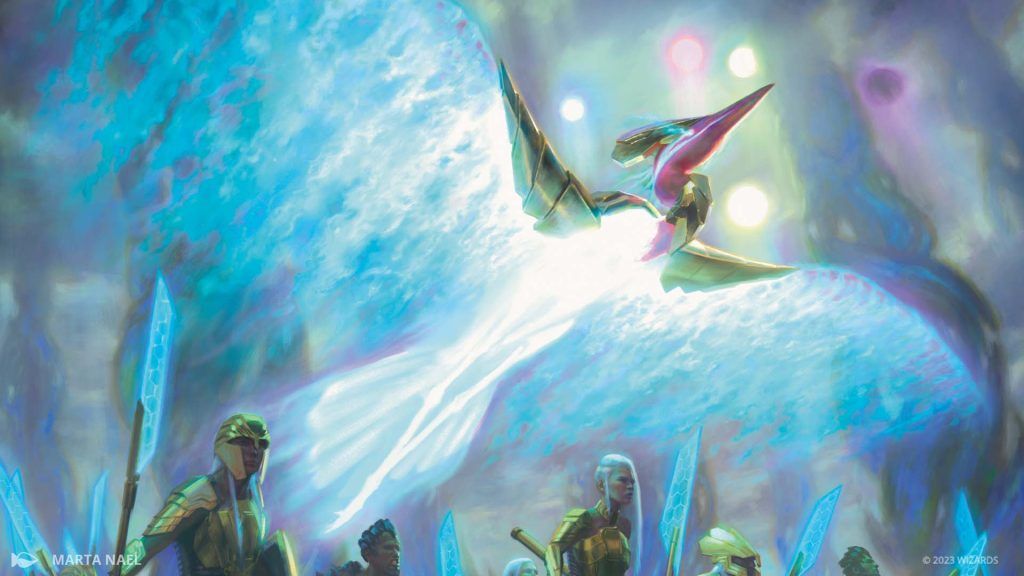
Otharri, Suns' Glory | Illustration by Marta Nael
Recursion exists primarily in black, but each color has its unique way to bring creatures back from the dead. This list only touches on creatures that can bring themselves back, but there are plenty of cards that bring back other creatures.
Like a Bloodghast with a fetch land, I’ll be back for more soon. Until then I’d love to hear how you use recursive creatures in the comments below or over in the Draftsim Discord.
Thank you for making Draftsim your #1 stop for all things Magic!
Follow Draftsim for awesome articles and set updates: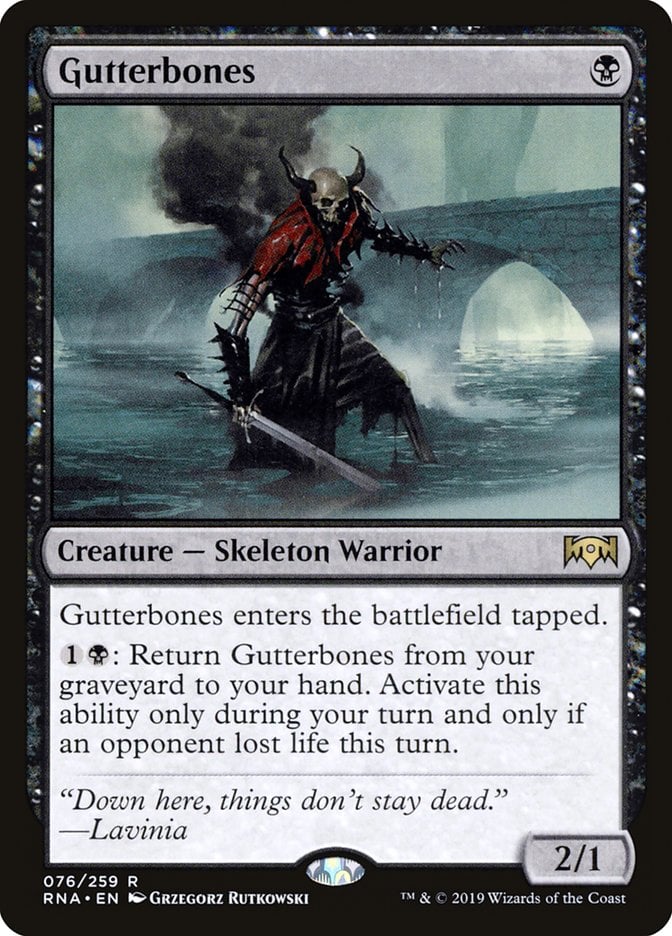
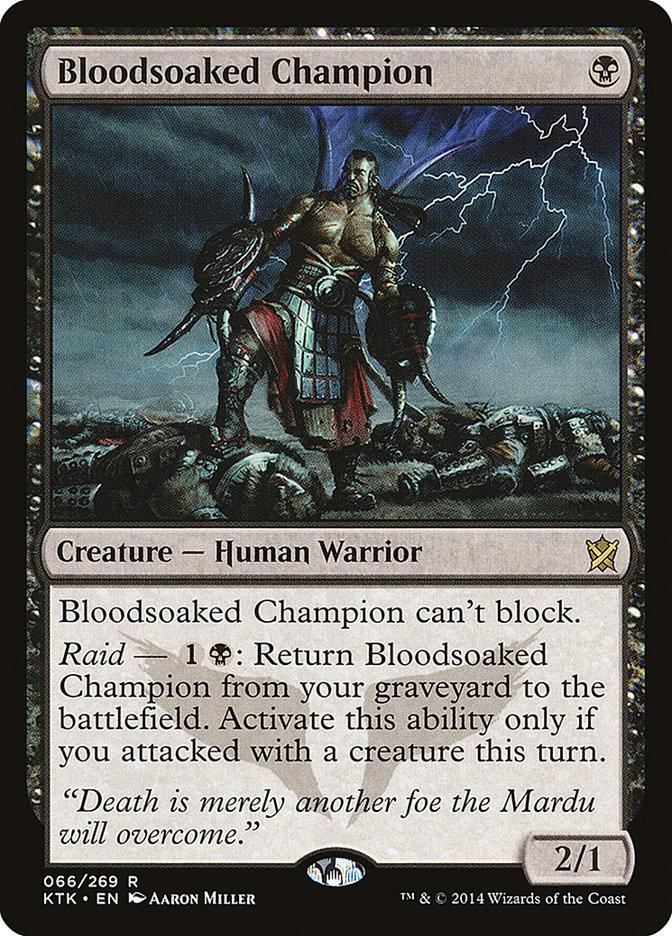
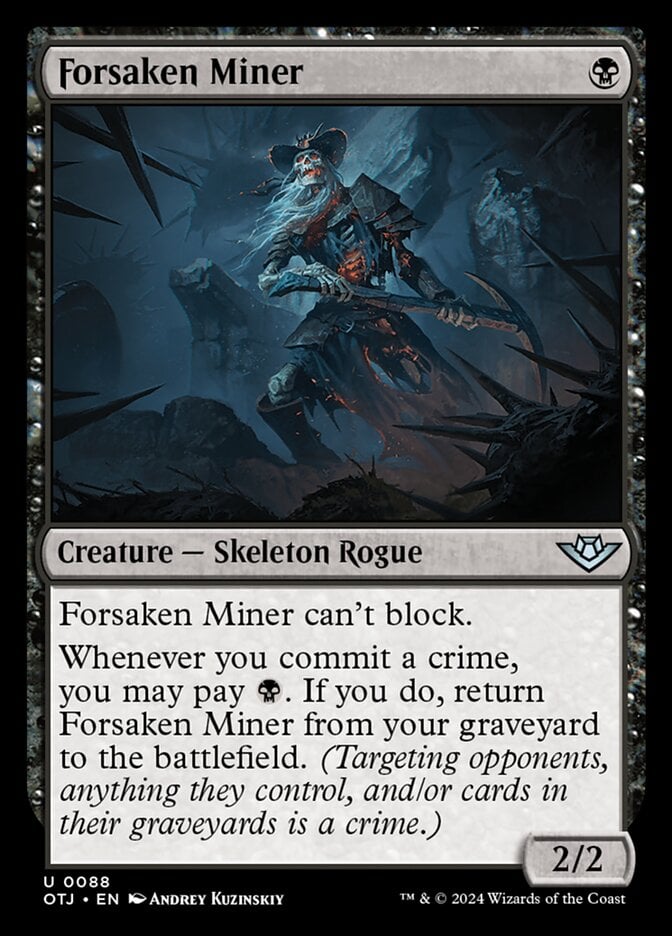
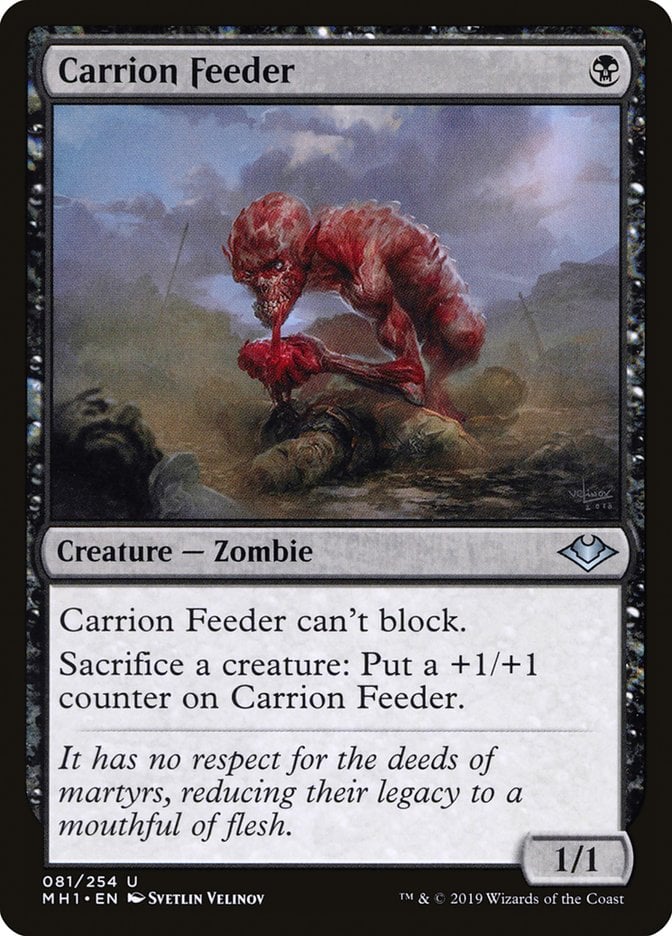

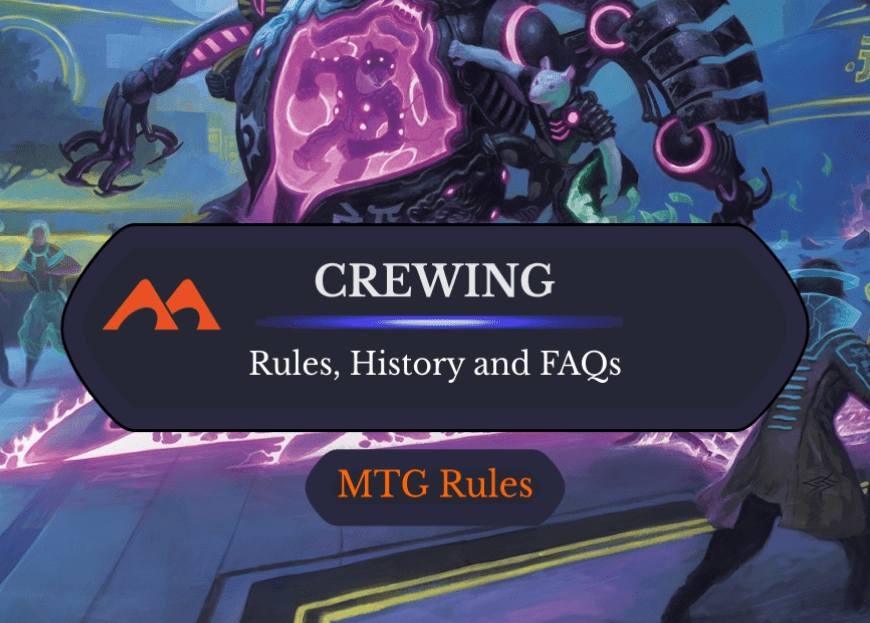
Add Comment